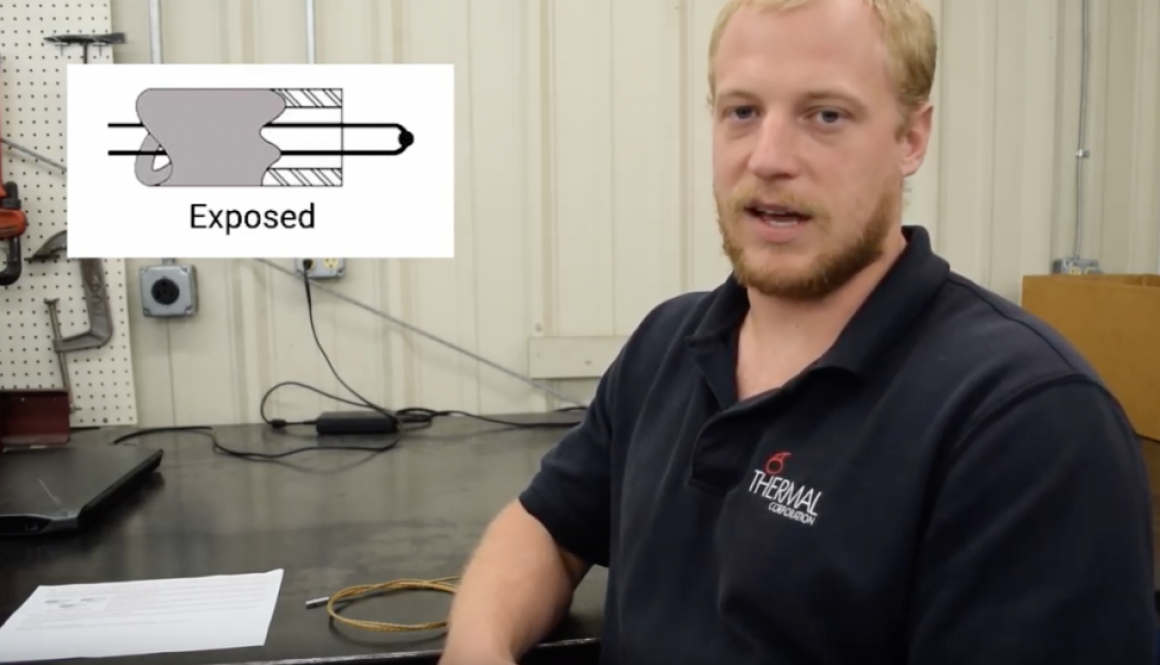Home > Blog Archive > Category: Industrial Heating Technology > Thermocouple Junctions & Their Importance
There are three different types of junctions for thermocouples: exposed, grounded, and ungrounded. Each of these serves a different purpose and has different characteristics. Let’s look at each type of junction and where they should be utilized.
What Are Thermocouple Junctions and Why Are They Important?
Briefly, a thermocouple works utilizing the Seebeck Effect. The Seebeck Effect is the conversion of thermal energy into a voltage potential at the junction of different types of metals. If a continuous circuit is made using dissimilar metals joined at two junction points, and the two junction points are at different temperatures a small voltage will flow through the wire. By measuring this small voltage (usually tens of millionths of a volt), we can determine the temperature at the place where the two dissimilar metals are joined (the junction). The thermocouple junction is, therefore, extremely important because this is the point where we are actually measuring temperature.

Exposed Thermocouple Junctions
As depicted in the picture to the left, exposed junctions consist of two bare wires that are joined outside of a protective metal probe. Exposed junctions are used to measure the temperature of a gas. Because there is no protective cover, the junction is very fragile. No moisture, or liquid or solid contaminants should be present in the gas. Exposed junctions, however, do provide a faster response time because thermal energy does not have to travel through a metal sheath and/or compacted insulation to impart energy to the junction.
Grounded Thermocouple Junctions
Grounded junctions are the most common type of junction. In this application, the junction is connected directly to the probe tip usually via soldering or welding. This provides a relatively fast response time as heat only has to travel through a metal sheath or probe and weld, all of which have a high thermal conductivity. This also provides durable protection for the junction inside the probe tip.
Ungrounded Thermocouple Junctions
Ungrounded junctions are used to protect sensitive electronics from small feedback voltages. Ungrounded junctions are similar to grounded junctions in that they are inside of a protective probe. However, they are not welded or soldered to the probe tip; instead, they are surrounded by an insulator, usually magnesium oxide. Ungrounded junctions provide a slower response time because heat must travel through the probe tip and then through the magnesium oxide (which has a lower thermal conductivity than a metal) before reaching the junction.
So, Why Have an Ungrounded Junction-type Thermocouple?
One reason for an ungrounded junction-type thermocouple is if there is a small voltage difference between grounding points. For example, an electronically-sensitive control panel is grounded at 0V. This instrumentation is connected to a temperature sensor that is on a machine which has a small voltage leak through the ground circuit and thus is grounded at 1V. There exists the possibility that a small current could travel through the sensor back to the control panel and have an unwanted effect on the electronic equipment.
Main Points
- Each junction is useful for different types of applications.
- Exposed junctions have no protective cover and are very fragile.
- Grounded junctions are the most common junction type and have a fast response time due to the highly thermal conductive material.
- Ungrounded junctions are surrounded by an insulator and provide a slower response time, but are useful for protecting sensitive electronics from small feedback voltages.
Written by Kyle Otte
Edited by Shelby Reece
Date Published: 02.01.2019
Last Updated: 09.04.2019
![]() Subscribe to our YouTube channel!
Subscribe to our YouTube channel!


